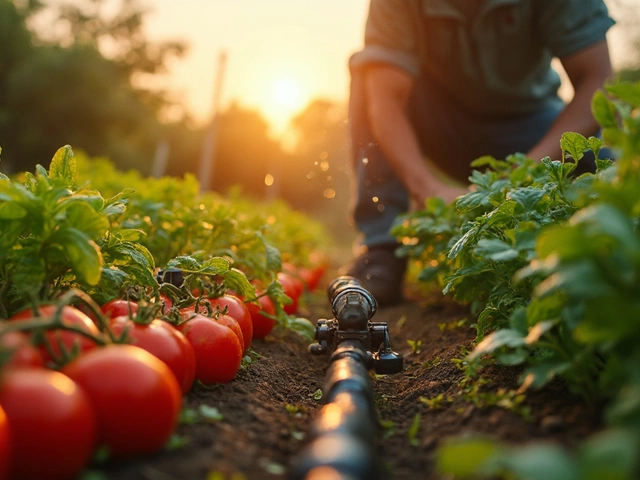Epsom Salt: Simple Boost for Your Garden
Ever wonder why some gardeners swear by Epsom salt? It’s just magnesium sulfate, a cheap powder that can fix common garden problems. In Indian soils, magnesium often runs low, especially after heavy rains or in sandy beds. Adding a little Epsom salt gives plants the magnesium they need to make chlorophyll, which means greener leaves and better fruit.
When to Use Epsom Salt
First, look for signs: yellowing leaves between the veins, slow growth, or weak stems. Tomatoes, peppers, and roses love extra magnesium. If you grow beans, cucumbers, or leafy greens and see those symptoms, a light Epsom salt feed can help. For a quick test, dissolve a teaspoon in a cup of water and pour it at the base of a struggling plant. If the leaves perk up in a week, you’ve found a useful tool.
How to Apply It Safely
Don’t overdo it. The rule of thumb for most Indian gardens is one tablespoon per 10 liters of water for a weekly spray, or ½ cup per 5 kg of soil for a one‑time mix. Mix the powder into the soil before planting or sprinkle it around the drip line of established plants. For large beds, spread the powder evenly and water it in. Always water after applying, so the salt reaches the root zone without burning the leaves.
If you have a rain‑fed garden, apply before the monsoon. The rain will dissolve the salt and carry it deeper where roots can use it. In dry regions, combine Epsom salt with a mulching routine to keep the soil moist and the nutrients available longer.
Beware of over‑application. Too much magnesium can lock out calcium, leading to blossom end rot in tomatoes and peppers. If you notice new problems after using Epsom salt, cut back the dosage and add a calcium source like lime.
Where to buy? Most Indian supermarkets, agricultural stores, and online marketplaces stock Epsom salt in the gardening aisle. Look for pure magnesium sulfate without added chemicals. A 1 kg pack lasts a season for a medium‑size garden.
Quick FAQ:
- Can I use it on indoor plants? Yes – mix ½ tsp in a liter of water and spray leaves once a month.
- Is it safe for seedlings? Use half the normal dose; seedlings are delicate.
- Does it replace fertilizer? No. It’s a supplement for magnesium, not a full‑nutrient feed.
Remember, Epsom salt works best when paired with good soil practices: proper compost, balanced N‑P‑K fertilizer, and regular watering. Think of it as a boost, not a replacement.
To sum up, Epsom salt is an inexpensive, easy‑to‑use tool that can solve magnesium deficiencies common in Indian gardens. Spot the symptoms, apply the right amount, and watch your veggies and flowers grow stronger. Give it a try next season and see the difference for yourself.
Epsom Salt Uses for Plants: Boost Your Green Thumb
Epsom salt, rich in magnesium and sulfur, can be a game changer for gardeners looking to improve their soil and plant health. It's popularly used to provide essential nutrients that help with growth, bloom, and even pest control. This article delves into the fascinating benefits of Epsom salt for plants, covering how it enhances nutrient uptake, boosts plant vitality, and can serve as a practical, cost-effective solution to common gardening issues. Whether you're new to gardening or a seasoned pro, discover how a simple addition like Epsom salt can transform your garden.
About
Soil Improvement
Latest Posts


Disadvantages of Having a Balcony Garden
By Alden Thorne Mar 10, 2025

Planting Bleeding Hearts: The Ultimate Guide for Your Kitchen Garden
By Alden Thorne Feb 26, 2025

Drip Irrigation System Life Expectancy: What to Really Expect
By Alden Thorne Jun 19, 2025

